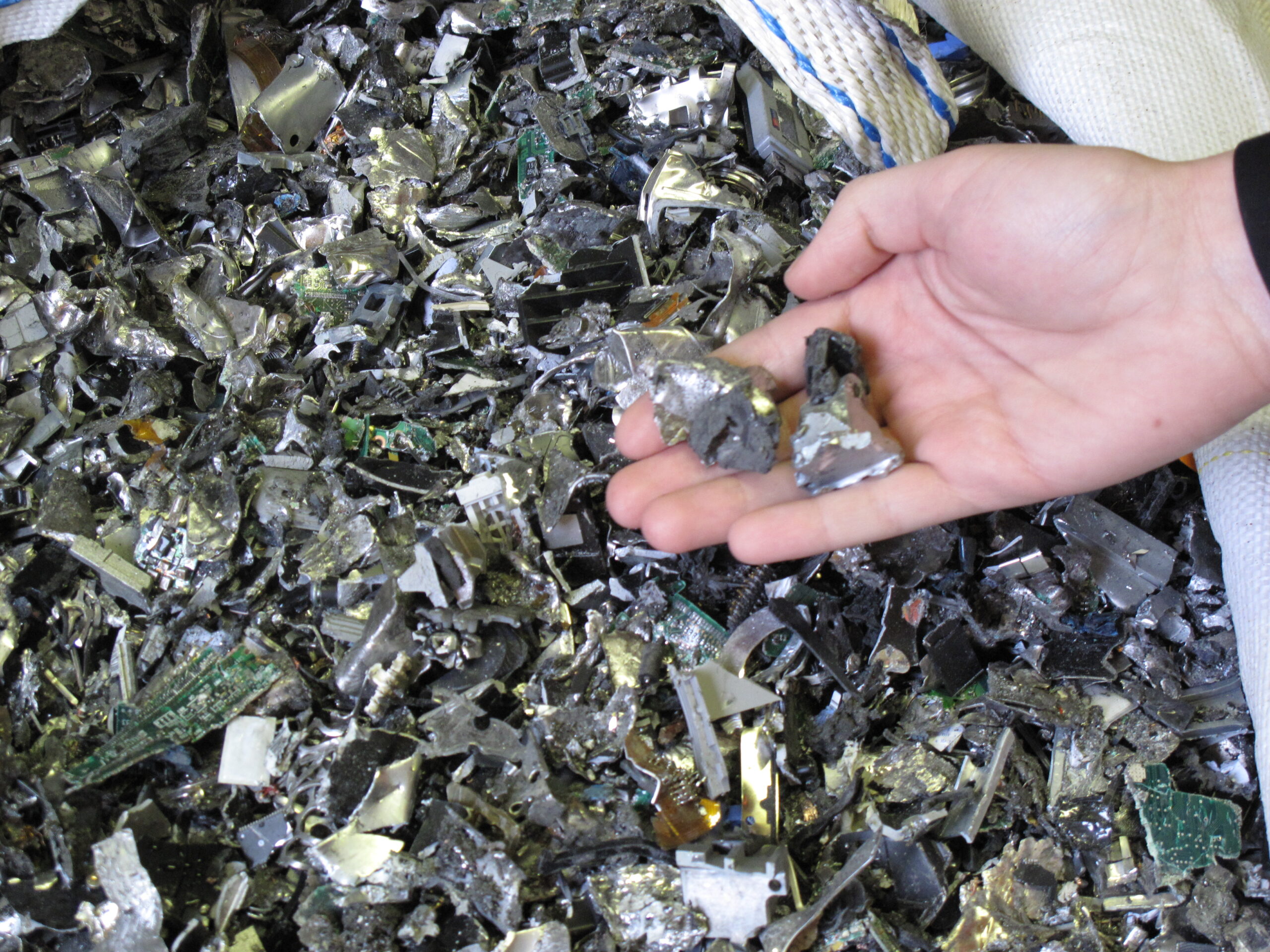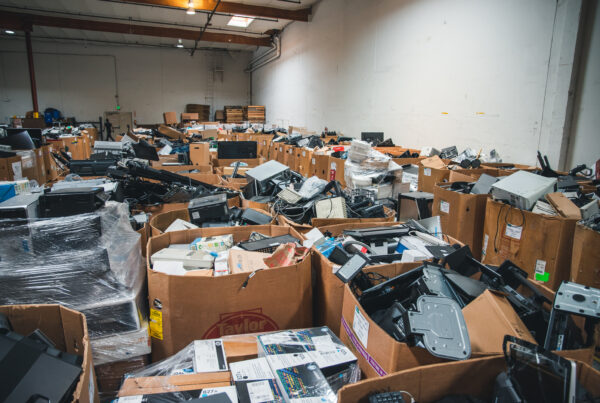Data breaches cost organizations nearly $5 million per incident, yet many IT professionals rely on data destruction methods that often leave sensitive information fully recoverable. When decommissioning technology, comprehensive data erasure and robust data security are essential. Organizations refreshing equipment face a critical responsibility: ensuring all information vanishes completely before devices begin their next journey.
Amid increasing regulatory penalties and consumer abandonment of breached companies, how can you definitively prove sensitive data has been properly eliminated? Certificates of Destruction provide vital verification, offering documented evidence that your information has been irretrievably destroyed through proven methods. For IT professionals managing enterprise and nonprofit assets, these certificates serve as verifiable proof that data has been completely removed before equipment moves on.
Table of Contents
- What Is a Certificate of Destruction?
- When are Certificates of Destruction Needed?
- What are the components of a Proper Certificate of Destruction?
- Legal Shield Against Regulatory Penalties
- Risk Mitigation in an Era of Sophisticated Data Recovery
- Completing Your Data’s Chain of Custody
- Three-Step Process for Complete Data Security
- Documentation That Proves Compliance
- Fill out the form below to speak to a team member about our secure data destruction and donation services.
What Is a Certificate of Destruction?
A Certificate of Destruction (COD) is a formal document that provides verified proof that specific items—documents, hard drives, electronics, or other data-containing media—have been securely and irreversibly destroyed. Unlike basic deletion confirmation or recycling receipts, this certificate serves as tangible evidence that your sensitive data now exists beyond the reach of even the most determined data recovery specialists. Essentially, it no longer exists at all.
When are Certificates of Destruction Needed?
Organizations require Certificates of Destruction when disposing of material containing personally identifiable information (PII), protected health information (PHI), corporate trade secrets, or financial information. These certificates become vital during the decommissioning of IT assets such as hard drives, servers, and storage media. Especially when equipment will be recycled, refurbished, or resold. Under regulations like HIPAA, GLBA, and FACTA, organizations not only must destroy sensitive data properly but must also document this destruction thoroughly.
What are the components of a Proper Certificate of Destruction?
A valid Certificate of Destruction contains several critical elements:
- Provider identification: Complete details of the business performing the destruction, including name, address, and relevant certifications
- Date and time documentation: Precise recording of when destruction occurred
- Destruction methodology: Detailed description of the process used (overwriting, degaussing, physical shredding)
- Item identification: Specific details about destroyed items, including serial numbers for hard drives
- Verification statement: Clear confirmation that destruction has been completed according to relevant standards
- Authorized signatures: Identification of responsible personnel who performed or verified the destruction
- Certificate tracking: Unique identifier or report number for audit tracking purposes
Without these elements, your documentation falls short of the standards necessary to prove regulatory compliance during audits, investigations, or legal proceedings. But with properly formatted documentation, how does a Certificate of Destruction actually protect your organization against the severe penalties associated with data breaches?
Why do Certificates of Data Destruction Matter?
Legal Shield Against Regulatory Penalties
Certificates of Destruction provide critical legal protection in an increasingly regulated data environment. Under HIPAA, improper PHI (Protected Health Information) disposal can trigger penalties up to $1.5 million annually per violation category.
FACTA mandates businesses destroy consumer information derived from consumer reports. And Sarbanes-Oxley holds executives personally liable with penalties reaching $5 million and potential 20-year imprisonment. These are real threats. The FTC regularly pursues organizations for inadequate data destruction practices, even when specific industry regulations don’t apply. Your Certificate of Destruction serves as documented evidence of compliance during audits and investigations.
Risk Mitigation in an Era of Sophisticated Data Recovery
Even when you believe data has been deleted, specialized recovery tools can resurrect information from improperly sanitized media. A proper Certificate of Destruction verifies that professional-grade methods have rendered your data irretrievable using NIST 800-88 compliant techniques. This documentation transfers responsibility from your organization to the provider, creating a legally binding assurance that your data remains beyond reach—essential protection when data breaches average $4.88 million per incident.
Completing Your Data’s Chain of Custody
From creation to destruction, every piece of sensitive information requires a documented chain of custody. The Certificate of Destruction completes this critical documentation trail. It provides the final link that proves proper handling throughout your data’s lifecycle. Without this final link, gaps in your data management create vulnerabilities during legal proceedings or compliance investigations.
Human-I-T’s Comprehensive Approach to Data Erasure
When you partner with Human-I-T for secure data destruction, you’re choosing a process engineered to eliminate both security vulnerabilities and environmental waste. Our rigorous methodology transforms potential liabilities into positive social impact through three integrated phases.
Three-Step Process for Complete Data Security
1. Secure Transportation & Storage
Every device containing sensitive data arrives at our facility through a meticulously monitored chain of custody. Authorized personnel receive your technology at our NAID-certified secure facility, where items remain physically secured and under continuous supervision until processing. For organizations preferring on-premises handling, our authorized technicians can perform data destruction at your location—eliminating transportation concerns entirely while maintaining the same rigorous standards.
2. NIST 800-88 Data Sanitization with Verification
Human-I-T implements the gold standard for data elimination: NIST 800-88 compliant sanitization. This process writes random data across the entirety of your storage devices, systematically destroying all recoverable information. Unlike basic deletion or formatting that leaves data vulnerable to recovery, our process includes comprehensive verification—each device undergoes rescanning to confirm 100% elimination of sensitive information, leaving nothing accessible even to advanced recovery techniques.
3. Physical Crushing When Digital Sanitization Isn’t Enough
When complete digital sanitization proves impossible, we take destruction to its ultimate level. Devices that cannot be verified as 100% sanitized undergo physical crushing through our R2-certified equipment. This transforms storage media into fragments that make data reconstruction physically impossible, with all materials recycled responsibly to minimize environmental impact.
Documentation That Proves Compliance
Our comprehensive documentation package provides incontrovertible evidence that your data sanitization meets regulatory requirements:
- Certificate of Data Destruction: Formal verification that all inventoried items have been appropriately destroyed
- Serialized Data Destruction Reports: Detailed PDF documentation of each sanitized device, including serial numbers, donation IDs, and processing dates
- Physical Crushing Documentation: Comprehensive reporting for physically destroyed items, detailing destruction methods, technician information, and device identifiers
With these protections in place, your organization gets regulatory compliance with total peace of mind. Ready to secure your sensitive data while making a positive impact?
Discover how proper data handling can become your organization’s competitive advantage at human-i-t.org/data-destruction.






